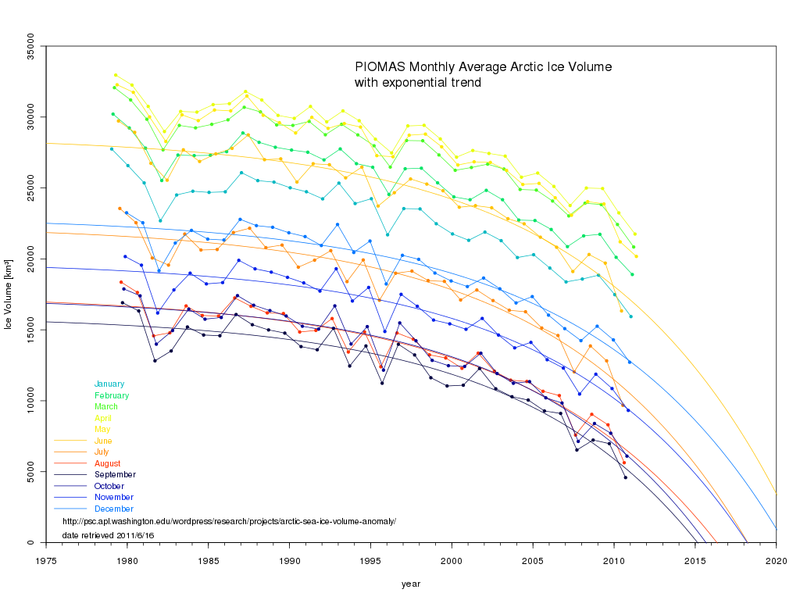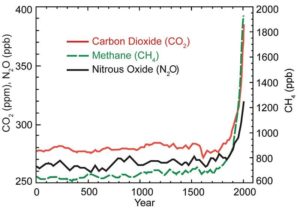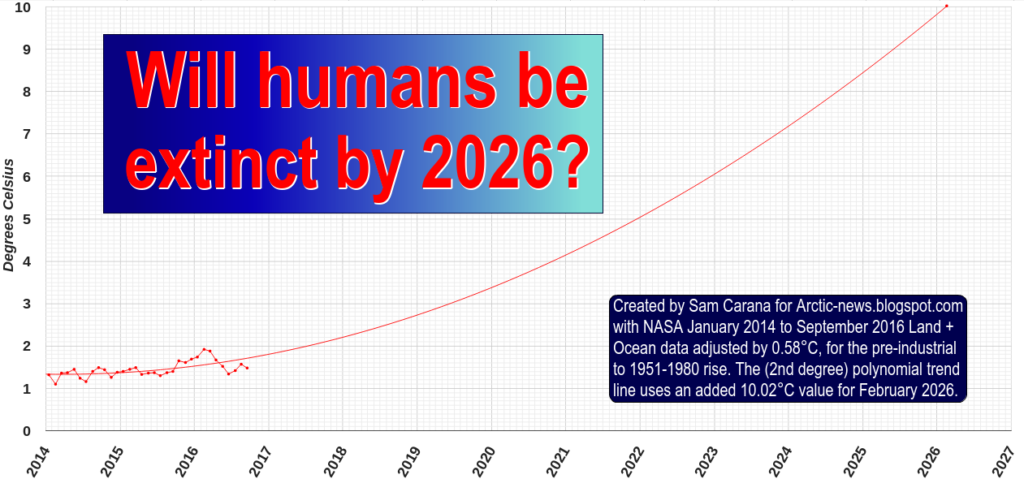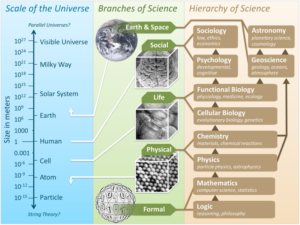The Hidden Harmony—the fundamental law of the Universe, which guides every moment of our lives—is just that: hidden. Heraclitus of Ephesus did not explicitly define the term in the few fragments of his writings that have survived. He simply said, “The Hidden Harmony is better than the obvious,” and “Opposition brings concord; out of discord comes the fairest harmony.” Then, to emphasize the hiddenness of the Hidden Harmony, he said, “People do not understand how that which is at variance with itself agrees with itself.”
Similarly, Lao Tzu said in Tao Te Ching, “When all the world recognizes beauty as beauty, this in itself is ugliness. When all the world recognizes good as good, this in itself is evil.” He continued, “The Tao is the hidden Reservoir of all things,” and “My words are very easy to understand and very easy to practice: But the world cannot understand them nor practice them.”
So what exactly is the Hidden Harmony, why has it been hidden from the vast majority of humans for thousands of years, and what can we do today to bring it out into the open in order to heal our fragmented, split minds and hence help bring about peaceful harmony to our troubled society?

Well, the Hidden Harmony simply denotes that opposites, polarities, or dualities, whether they be complementary or contradictory, are never separate from each other in Reality. As such, the Hidden Harmony is familiar to many in the Chinese concepts of yin and yang—despite the esoteric nature of the Tao—as inseparable dark and light, moon and sun, female and male, etc., and the classic T’ai-chi-t’u symbol, or ‘Diagram of the Supreme Ultimate’.
This symbol depicts the cyclic nature of the Universe. For example, day turns into night, which then turns back to day. The dots in the middle of the two main shapes indicate the potential of the opposite to arise when one side is dominant in any particular situation. The key point here is that when the Universe is viewed as a Whole, both opposites co-exist; to reject one in favour of the other does not lead to Wholeness, Peace, and tranquillity.

But there is more to polarities than is depicted here. In the spring of 1980, when setting out to develop a cosmology of cosmologies that would integrate the psychospiritual energies within us with the four basic forces recognized by physicists, I realized that there is often a primary-secondary relationship between opposites. As I have since discovered, this was not a new idea. It is present in the philosophies of Immanuel Kant, Georg Wilhelm Friedrich Hegel, Johann Fichte, and in the triadic architectonic of Charles Sanders Peirce, for instance.
At the time, seeking to find a starting point for developing a comprehensive, self-inclusive map of the Universe—as a taxonomy of taxonomies—I was playing around with sets and the principle of duality in projective geometry and Boolean algebra, which I had studied as an undergraduate in mathematics in the early 1960s.
Using David Bohm’s method for bringing about order in quantum physics, by the autumn of 1983 the Principle of Duality in the Universal Method had enabled me to form the concept of the Formless Absolute in exactly the same way as I form the concept of a triangle or a rose, for instance. Then, twenty years later, God became a rational, scientific concept in the mountains and forests of Norway and Sweden. I knew the Ineffable Truth with absolute certainty, both experientially and cognitively.
Today, I encapsulate this fundamental law of the Universe in the Principle of Unity, which simply states Wholeness is the union of all opposites, intuitively revealed to me through a great awakening in the early 1980s. In other words, the Hidden Harmony cannot be deduced from any axioms, as assumed or self-evident truths, or previous conceptual structures; it emerges directly from the Divine Origin of the Universe, fresh and innocent, like an infant.
But is the Principle of Unity, as a proposition, true? Well, Aristotle, the founder of Western linear systems of thought, did not think so, saying in Metaphysics: “It is impossible for the same attribute at once to belong and not to belong to the same thing and in the same relation, … as some imagine Heraclitus says.” This statement is known as the Law of Contradiction today, lying at the starting point of mechanistic processes of deductive logic and mathematic proof. For if assumptions and axioms are contradictory, you can prove anything from them.
So we can regard conventional logicians and mathematicians, who deny the truth of the Hidden Harmony, to be opposite to mystics and psychologists, who affirm its veracity, thereby showing that the Principle of Unity is a universal, irrefutable truth. Accepting this is absolutely essential, for the world we live in is full of paradoxical situations. So if we reject self-contradictions from our reasoning—like “This sentence is false”—our maps of the world we live in will be incomplete, leading us dangerously astray, both in our business affairs and personal relationships. In contrast, the best way to avoid conflict and delusion in our thinking is to follow E. F. Schumacher’s maxim for holistic mapmaking, “Accept everything; reject nothing.”
 In diagrammatic form, the Principle of Unity, as a modern expression of the Hidden Harmony, looks like this, using the primary-secondary relationship between the Formless Absolute and the relativistic world of form to illustrate the general principle. Applying Hegelian logic, although Hegel never used these terms, if A is the thesis and not-A the antithesis, then A is the synthesis, a primary-secondary relationship that is ubiquitous. It is even possible to express the Principle of Unity in the notation of mathematical logic, called the Cosmic Equation, where A is any being, W is any whole, ∪ is union, and ¬ is not:
In diagrammatic form, the Principle of Unity, as a modern expression of the Hidden Harmony, looks like this, using the primary-secondary relationship between the Formless Absolute and the relativistic world of form to illustrate the general principle. Applying Hegelian logic, although Hegel never used these terms, if A is the thesis and not-A the antithesis, then A is the synthesis, a primary-secondary relationship that is ubiquitous. It is even possible to express the Principle of Unity in the notation of mathematical logic, called the Cosmic Equation, where A is any being, W is any whole, ∪ is union, and ¬ is not:

This is the simple, elegant equation that reveals the innermost secrets of the Universe, potentially explaining everything, which Albert Einstein and Stephen Hawking long sought for at the core of their unified field theory and theory of everything, respectively.

To see why it is quite legitimate to include paradoxes in rational thought, we need to dive beneath the self-contradictions in the foundations of mathematics, since they have been understood since 1900. From the vantage point of the Immortal Ground of Being, we can then look at mathematics as a generative science of patterns and relationships, emerging directly from the Divine Origin of the Universe.
It is in this natural, creative way that we could consummate the sacred marriage of science and spirituality, completing the final revolution in science, just as Isaac Newton completed the first with Mathematical Principles of Natural Philosophy in 1687. However, as the mathematics involved is rather advanced, taking the abstractions of modern algebra to the utmost level of generality, it is not appropriate to explore this further in this blog post, which is intended for inquisitive general readers, whatever their background.
All I need to say is that linear systems of thought have led to the invention of the stored-program computer, executing linear sequences of instructions, albeit in many parallel threads in modern multi-headed central processing units, collectively collaborating in networks, such as the Internet, as a whole.
But this is not how we humans think and organize our ideas, as we can see in the data types or categories used to actually design programs and databases at higher levels of conceptual modelling. For these are nonlinear, having both hierarchical and nonhierarchical structures, a huge semantic gap from the binary logic gates in computers. It is therefore quite rational and justifiable to welcome paradoxes into the Universal Method, as Integral Relational Logic, which has evolved from the information systems modelling methods underlying the Internet.

This rational, scientific approach is quite sufficient to admit the Principle of Unity into consciousness. However, there are also a host of psychospiritual reasons why the Hidden Harmony has been concealed from human thought for thousands of years. Carl Gustav Jung highlighted the central issue in his Commentary to Richard Wilhelm’s translation of The Secret of the Golden Flower: “The Chinese have never failed to recognize the paradoxes and the polarity inherent in all life. The opposites always balance on the scales—a sign of high culture. Onesideness, though it lends momentum, is a mark of barbarism.”
Onesideness, accepting one opposite in a pair, rejecting the other, is closely related to one’s sense of identity, which derives from Latin idem ‘same’. What is the same has two dimensions: the Divine, Cosmic Identity we share with all other beings and our unique personality types as humans, which are generally regarded to remain the same throughout our lives. Regarding the former, our Genuine Identity has two dimensions, depth and breadth.
In terms of the former, through the ages mystics and spiritual seekers have discovered their True Nature or Authentic Self in union with the Divine by looking inwards. However, as the Abrahamic religions have long regarded such blissful, profound experiences as heretical, our restrictive cultural conditioning has tended to inhibit the evolution of our cognitive intelligence to its utmost breadth, embracing the Totality of Existence within Consciousness as a coherent whole.
So the many developmental models that Ken Wilber has synthesized in his Superhuman Operating System tell us much about our evolutionary history but little about our fullest evolutionary potential as superintelligent beings. His Superhuman OS training, being rebroadcast this winter, stops at the Integral level in what he calls the second tier, a giant leap from the egocentric and ethnocentric levels, where 95% of the population live their lives.

Ken does not seem to be fully aware of what third-tier cognitive development might be, although admitting that there is such a possibility. For, as he says, at any one level of development, it is only possible to see earlier stages of evolution, not later ones, gloriously culminating in evolution’s Omega Point. So those being consciously guided in their lives by the Hidden Harmony are effectively invisible to those who lack cognitive awareness of the fundamental law of the Universe.
Nevertheless, Ken and Andrew Cohen said in an article in the What is Enlightenment? magazine in 2007, the third tier, called Kosmocentric, means “an identification with all life and consciousness, human or otherwise, and a deeply felt responsibility for the evolutionary process as a whole … an emergent capacity, rarely seen anywhere”.
To see how evolution could become fully conscious of itself in the third tier of cognitive development, Ken mentions Julian Huxley, who observed in a 1957 visionary essay titled ‘Transhumanism’ that by “destroying the ideas and the institutions that stand in the way of our realizing our possibilities”, we could understand human nature, what it truly means to be a human being. As Huxley continued, we could thereby transcend our limitations, fulfilling our highest potential as spiritual beings, living in mystical ecstasy, free from the suffering that has plagued humanity through the millennia.
Mystical awareness is thus the true starting point for evolutionary development, a line that Andrew Cohen and Thomas Hübl, two of Ken’s colleagues, have been pursuing in recent years. However, as evolutionary leaders do not generally have a background as an information systems architect in business, exploring the relative capabilities of humans and computers in the workplace, it seems that few have so far realized or observed humanity’s fullest evolutionary potential in either themselves or others. So what it truly means to be a human being—in contrast to machines—remains a mystery, as the theme of the Science and Nonduality (SAND) conference in 2018 indicates: ‘The Mystery of Being Human’.

As it is necessary for the Principle of Unity to become explicit in consciousness in order for cognitive development to broaden in the third tier, culminating in Wholeness and Cosmic Consciousness, embracing Oneness and Unity Consciousness with undivided Supermind, is it possible for the Hidden Harmony to be revealed to more than a few intrepid explorers of what Abraham Maslow called The Farther Reaches of Human Nature in a posthumous book with this title?
Well, Maslow highlighted the central issue in Chapter 2 titled ‘Neurosis as a Failure of Personal Growth’, writing, “We have the impulse toward full development of humanness. Then why is it that it doesn’t happen more often? What blocks it?” This is normalcy, which Maslow says is a “kind of sickness or crippling or stunting that we share with everyone else and therefore don’t notice”.
Erich Fromm said much the same thing in The Sane Society, whose first two chapters are, “Are We Sane?” and “Can a Society be Sick?”, answering these questions with a resounding ‘NO’ and ‘YES’, respectively. What is regarded as the normal behaviour of a society can be considered to be pathological.
Maslow called this human malaise the Jonah Complex or Syndrome, which has a long history, as the story of Jonah in the Bible indicates. Sometimes when we let loose the unlimited potential energy within us, the effect can be overwhelming, leading to what Christina and Stanislav Grof call a spiritual emergency, when Spirit emerges faster than the organism can handle.
We can even fear success, even fear God, in whatever way we view Ultimate Reality, ranging from Buddhist Emptiness (Shunyata) to the Supreme Being of the Christians. As Ernest Becker writes in The Denial of Death, “It all boils down to a simple lack of strength to bear the superlative, to open oneself to the totality of experience.”
It was not only the writers of the Old Testament who were aware of the Jonah syndrome. Arjuna had a similar experience, recorded in the Bhagavad Gita. When Krishna showed him the Ultimate Cosmic Vision—“all the manifold forms of the universe united as one”—Arjuna said, “I rejoice in seeing you as you have never been seen before, yet I am filled with fear by this vision of you as the abode of the universe.”
Elaine Pagels makes a similar point in Beyond Belief, the quotation in this passage coming from the sayings of Jesus in the Gospel of Thomas:
Discovering the divine light within is more than a matter of being told that it is there, for such a vision shatters one’s identity: “When you see your likeness [in a mirror] you are pleased; but when you see your images, which have come into being before you, how much will you have to bear!” Instead of self-gratification, one finds the terror of annihilation. The poet Rainer Maria Rilke gives a similar warning about encountering the divine, for “every angel is terrifying.”
However, the Jonah Syndrome does not only inhibit individuals from reaching their fullest potential as Superhumans. Society as a whole has a tendency to inhibit people’s awakening, which Maslow called ‘counter-valuing’, seeking to maintain traditional ways of looking at the world and managing our affairs, which are becoming increasingly dysfunctional. So if we are to bring universal order to our chaotic world, we need to start afresh at the very beginning, as Huxley indicated.

For myself, the fundamental law of the Universe has been consciously guiding my life since midsummer 1980—half my lifetime. So the Hidden Harmony is second nature to me in its modern expressions as the Principle of Unity and Cosmic Equation. But I still live in solitude, unable to communicate the Hidden Harmony to anyone else, for this can only be revealed through a miracle, through the direct action of the Divine.
Specifically, to intelligently adapt to the unprecedented rate of evolutionary change, flowing freely with the creative power of Life, we need to let go of egoic attachment to everything in the relativistic world of form, as Shakyamuni Buddha taught. This is especially the case with money, the most divisive force on the planet, which provides many with a precarious sense of security and identity in life.
If this miracle could happen, we would collectively enter the exquisite Age of Light before our inevitable demise as a species in the next few decades. It looks most unlikely. Nevertheless, all I can do as an individuated being living in Wholeness is follow my inner guru at every moment, enjoying the beauteous wonders that have been revealed to me with deepest gratitude.







